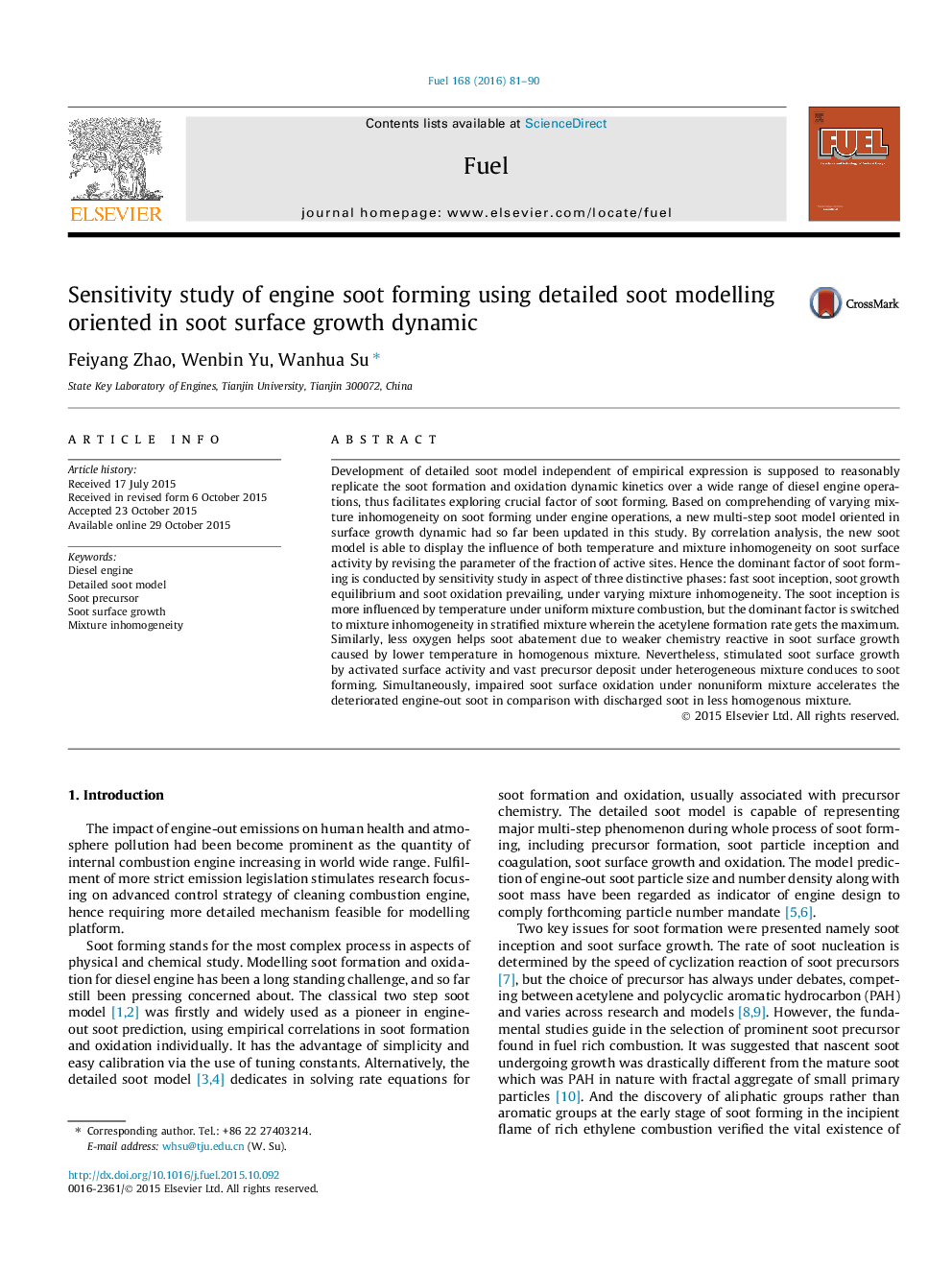| Article ID | Journal | Published Year | Pages | File Type |
|---|---|---|---|---|
| 205475 | Fuel | 2016 | 10 Pages |
Development of detailed soot model independent of empirical expression is supposed to reasonably replicate the soot formation and oxidation dynamic kinetics over a wide range of diesel engine operations, thus facilitates exploring crucial factor of soot forming. Based on comprehending of varying mixture inhomogeneity on soot forming under engine operations, a new multi-step soot model oriented in surface growth dynamic had so far been updated in this study. By correlation analysis, the new soot model is able to display the influence of both temperature and mixture inhomogeneity on soot surface activity by revising the parameter of the fraction of active sites. Hence the dominant factor of soot forming is conducted by sensitivity study in aspect of three distinctive phases: fast soot inception, soot growth equilibrium and soot oxidation prevailing, under varying mixture inhomogeneity. The soot inception is more influenced by temperature under uniform mixture combustion, but the dominant factor is switched to mixture inhomogeneity in stratified mixture wherein the acetylene formation rate gets the maximum. Similarly, less oxygen helps soot abatement due to weaker chemistry reactive in soot surface growth caused by lower temperature in homogenous mixture. Nevertheless, stimulated soot surface growth by activated surface activity and vast precursor deposit under heterogeneous mixture conduces to soot forming. Simultaneously, impaired soot surface oxidation under nonuniform mixture accelerates the deteriorated engine-out soot in comparison with discharged soot in less homogenous mixture.
